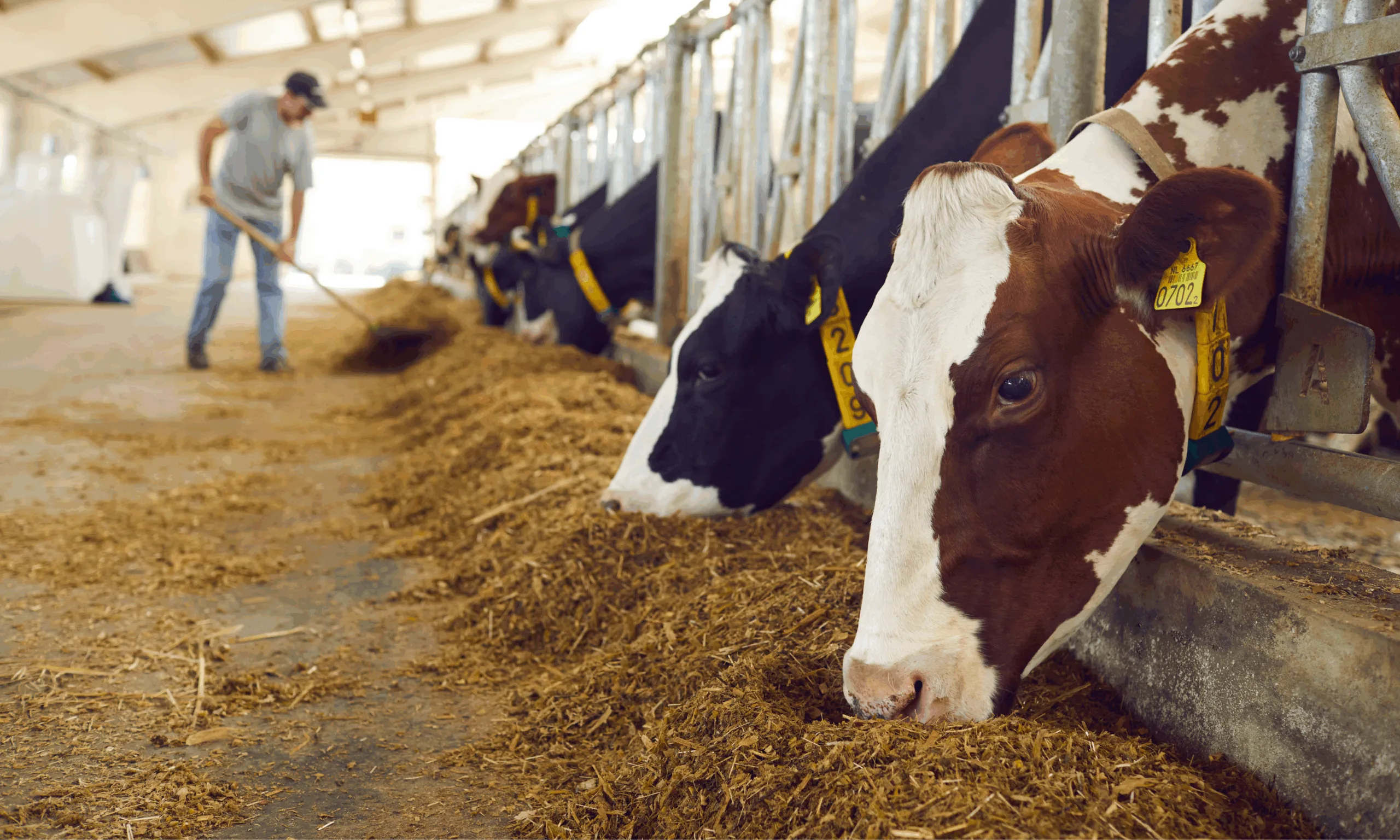Beyond concrete: Where else can Limestone filler make a difference?
Limestone filler is often associated with concrete production, but its versatility extends far beyond structural applications. At LKAB Minerals, our high-purity calcium carbonate is valued not only as a concrete additive but also as a key ingredient across multiple industries. From road construction and agriculture to animal feed, coatings, and more. In this article, we explore how Limestone filler makes a difference in diverse applications and why it remains one of the most adaptable minerals available.
Limestone in concrete: A foundation for wider benefits
Limestone filler is well known for its role in improving concrete performance. By partially replacing clinker, it reduces the carbon intensity of cement while maintaining strength and durability. Recent advances in UK standards now allow up to 20% Limestone filler in concrete mixes, a development that enables significant CO₂ savings at scale.
Its fine particle size enhances particle packing, fills voids, and improves workability, helping to create smoother finishes and reduce water demand. As a result, concrete becomes more consistent and easier to handle on-site. Even small improvements in material efficiency make a major difference when applied across the vast volume of global concrete production.
However, the benefits of Limestone filler don’t stop with concrete. Thanks to its chemical neutrality, stability, and fine particle structure, it plays an essential role in many other industrial, environmental, and agricultural processes.

Building better roads and infrastructure
Beyond concrete, Limestone filler is a vital component in asphalt and road construction. It is used to improve the mechanical performance and surface quality of road materials. The filler helps bind aggregates together, creating smoother, more resilient surfaces that resist deformation, cracking, and moisture damage.
In asphalt mixtures, Limestone filler improves stability, extends the life of pavements, and enhances the bond between bitumen and aggregate. This is especially valuable for high-traffic motorways, airfields, and industrial yards, where strength and durability are essential.
Because road construction materials are subject to extreme conditions – temperature fluctuations, heavy loads, and water exposure – the consistent particle size and composition of LKAB Minerals’ Limestone filler help maintain performance throughout the structure’s lifespan. It also reduces binder consumption, supporting both cost efficiency and environmental responsibility in roadbuilding projects.
Supporting agriculture and soil health
Limestone’s natural properties make it equally valuable in agricultural and environmental applications. When ground into fine powder, it becomes an effective soil conditioner and liming agent, neutralising acidity and improving soil structure. Healthier soils allow crops to absorb nutrients more efficiently, boosting yields and long-term soil vitality.
LKAB Minerals supplies Limestone grades tailored for agricultural use, supporting farmers in improving both soil pH balance and nutrient uptake. In regions where acidic soils can limit productivity, regular application of Limestone filler can make a measurable difference to crop health and growth rates.
Beyond soil, Limestone filler is also used in animal feed as a rich source of calcium, essential for bone strength and eggshell quality. Our feed-grade Limestone meets UFAS accreditation standards, ensuring safety and consistency for livestock nutrition. Coarser grades of Limestone are also used in animal bedding, helping absorb moisture and maintain hygiene.
These agricultural applications highlight Limestone’s value not just as an industrial material, but as a contributor to environmentally responsible food and farming systems.

Enhancing coatings, adhesives, and industrial products
Another key use of Limestone filler lies in coatings, plasters, and adhesives. In these formulations, it acts as a performance-enhancing filler that improves workability, surface finish, and mechanical stability. It also helps control viscosity and reduces shrinkage during drying or curing.
In paints and surface coatings, Limestone filler provides brightness and opacity, reducing pigment requirements and improving durability. Because it is chemically inert, it does not react with other components, ensuring long-term stability.
Beyond construction, fine calcium carbonate fillers are used in rubber, plastics, and composite materials, where they improve strength and reduce production costs. The consistency of LKAB Minerals’ Limestone makes it ideal for use in products requiring predictable performance and high quality.
Why Limestone filler is so versatile
The secret behind Limestone’s versatility lies in its combination of chemical and physical characteristics:
- Neutral pH and inert behaviour – compatible with a wide range of materials.
- Fine and consistent particle size – improves packing density and workability.
- High calcium carbonate purity – ensures reliable performance in sensitive applications.
- Abundant and efficient supply – supports large-scale manufacturing and reduces material volatility.
These properties make it a true multi-industry mineral, adaptable to processes that demand stability, quality, and environmental efficiency.
Limestone filler also contributes to carbon reduction by displacing more energy-intensive raw materials. In cement and concrete, for example, every tonne of clinker replaced with Limestone represents a direct cut in CO₂ emissions. This connection between performance and environmental responsibility underpins its growing demand across multiple sectors.

Innovation and circular use
As industries strive to lower carbon footprints, the role of Limestone filler continues to evolve. Research is expanding into functionalised fillers, where Limestone surfaces are modified for specific performance traits – such as enhanced bonding, improved rheology, or moisture control.
Circular economy principles are also shaping the future of Limestone use. For instance, recycling and reusing Limestone filler recovered from asphalt plants or construction residues can reduce waste and support closed-loop material systems. LKAB Minerals is actively involved in exploring how by-products and secondary minerals can be refined into valuable new resources.
In agriculture, innovation continues around combining Limestone with other soil-enhancing minerals or organic matter to improve efficiency and environmental impact. In construction, the push toward low-carbon concrete and asphalt formulations means Limestone filler will play an even more important role in achieving emission targets without compromising performance.
From concrete and asphalt to soil, coatings, and feed, Limestone filler proves its worth as one of the most versatile materials in modern industry. Its ability to improve performance, reduce emissions, and enhance material efficiency makes it an invaluable resource for both manufacturers and environmental managers alike.
At LKAB Minerals, we continue to refine our Limestone production to meet the highest standards of purity and consistency, supporting customers across construction, agriculture, and manufacturing. To learn more about our Limestone products and how they can enhance your applications, visit our Limestone product page or contact our team of experts. You can also follow LKAB Minerals on LinkedIn for the latest product updates, case studies, and industry insights.




